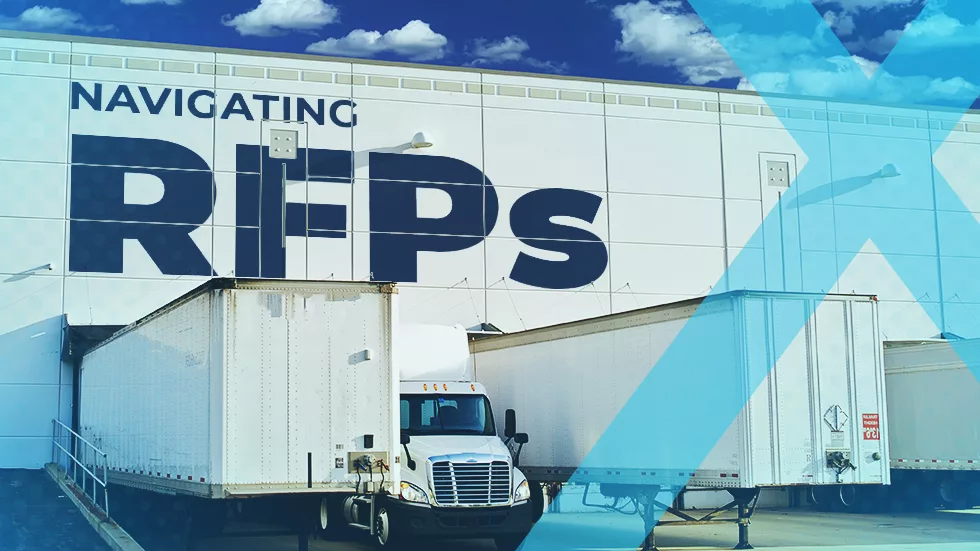
Navigating RFPs: A Strategic Approach
By Billie Rodriguez – Director of Operations, Dynamic Logistix
You just made it through the holiday season…sleighbells, sugar cookies, Santa…ribbon, reindeer, and roasting chestnuts. Now it’s time to prepare for the next season that can have a big impact on your entire year…RFP season. As you know, RFPs play a pivotal role in shaping partnerships between shippers and carriers, and the intricacies are all too real, demanding a comprehensive understanding of market dynamics, shipper requirements, and effective strategies for success. Let’s take a look at best practices, strategic considerations, and key questions that can help guide you through the labyrinth of RFPs.
Understanding the Landscape
The foundation of a successful RFP response starts with a deep understanding of both the market and the shipper’s unique needs. According to insights from DAT iQ Bid Boldly, carriers should work to meticulously understand the market and any additional external factors. We know the logistics landscape is ever evolving, influenced by external factors such as fuel prices and geopolitical events. Keeping a pulse on these trends empowers carriers to adapt their strategies in response to market dynamics.
Next, consider the intricacies of the shipper’s needs and unique requirements, including accessorials. This knowledge becomes the cornerstone for tailoring proposals that align seamlessly with the shipper’s objectives.
Finally, strategic success in RFPs involves identifying where a carrier can bring strength and extensive coverage, especially in key lanes. This targeted approach enhances competitiveness and demonstrates a commitment to meeting the shipper’s specific requirements.
Gathering Information Through Analytics and Clear Objectives
The use of analytics tools is crucial for processing and interpreting vast datasets. This enables carriers to make informed decisions based on market trends, historical data, and performance metrics. In addition to the use of analytics, you’ll want to align the proposal with objectives that enhance the likelihood of a successful bid like clarifying shipper objectives, proposal evaluation criteria, timelines and submission guidelines.
Know that even when you aren’t awarded freight, the diligence and practice has not been a wasted effort. Every RFP participation has teachable insights; so ask for candid feedback and keep the mentality that opportunities are abundant – establishing key relationships with shippers will allow for inclusion in mini bids or one-step closer to garnering business in the future.
Carriers should continuously strive to meet or exceed agreed-upon service levels, fostering trust and reliability by regularly analyzing performance metrics. The metrics are quickly and readily available through the data management system. Likewise, know when you cannot commit to something. It’s better to admit you can’t do something rather than trying to take it on and underdelivering. Shippers will respect your honesty and appreciate you valuing their time. Only pick off what you know you can confidently cover and don’t overextend your capacity utilization. The worst thing a carrier can do is come in too aggressive, be awarded freight, and then fall flat on their faces. That is a fast track toward RFP purgatory – and unfortunately, you won’t be invited the next time around.
Strategic Focus: Balancing Cost Competitiveness and Service Quality
In a survey recently conducted by Talon Logistics and Freight Waves, shippers narrowly placed reliability over cost-efficiency in ranking the factors of importance when choosing a shipping method, 4.31 for reliability and 4.18 for cost-efficiency. Rather than solely focusing on cost, emphasize the value and quality of services provided by striking a balance between cost competitiveness and reliability. Shippers increasingly prioritize carriers who can provide cost-competitive solutions without compromising on service quality.
Ask Relevant Questions
Asking pertinent questions during the RFP process ensures alignment between carrier capabilities and shipper expectations:
- If relevant, inquire whether the shipper intends to use its private fleet within the RFP, influencing the overall logistics strategy.
- Ask whether the shipper is seeking assets only or a combination of assets and brokers?
- What are their onboarding expectations/carrier mix against size and freight volumes?
Navigating the intricate landscape of RFPs requires a strategic and informed approach that includes understanding the market, shipper requirements, leveraging analytics and data with a reliable TMS, and focusing on service quality, carriers can then position themselves for success as we approach the 2024 RFP season.
With more than $1 billion in managed freight under TMS management, Dynamic Logistix is always looking for reliable carriers to partner with. For more information, please visit our website.
Dynamic Logistix is a third-party provider of shipping and freight solutions that combines a world-class technology platform with stellar personal service. Our technology, our culture and our connections with shippers allows us to provide premium shipments to our carrier network.
Billie Rodriguez is the director of carrier solutions at Dynamic Logistix.





